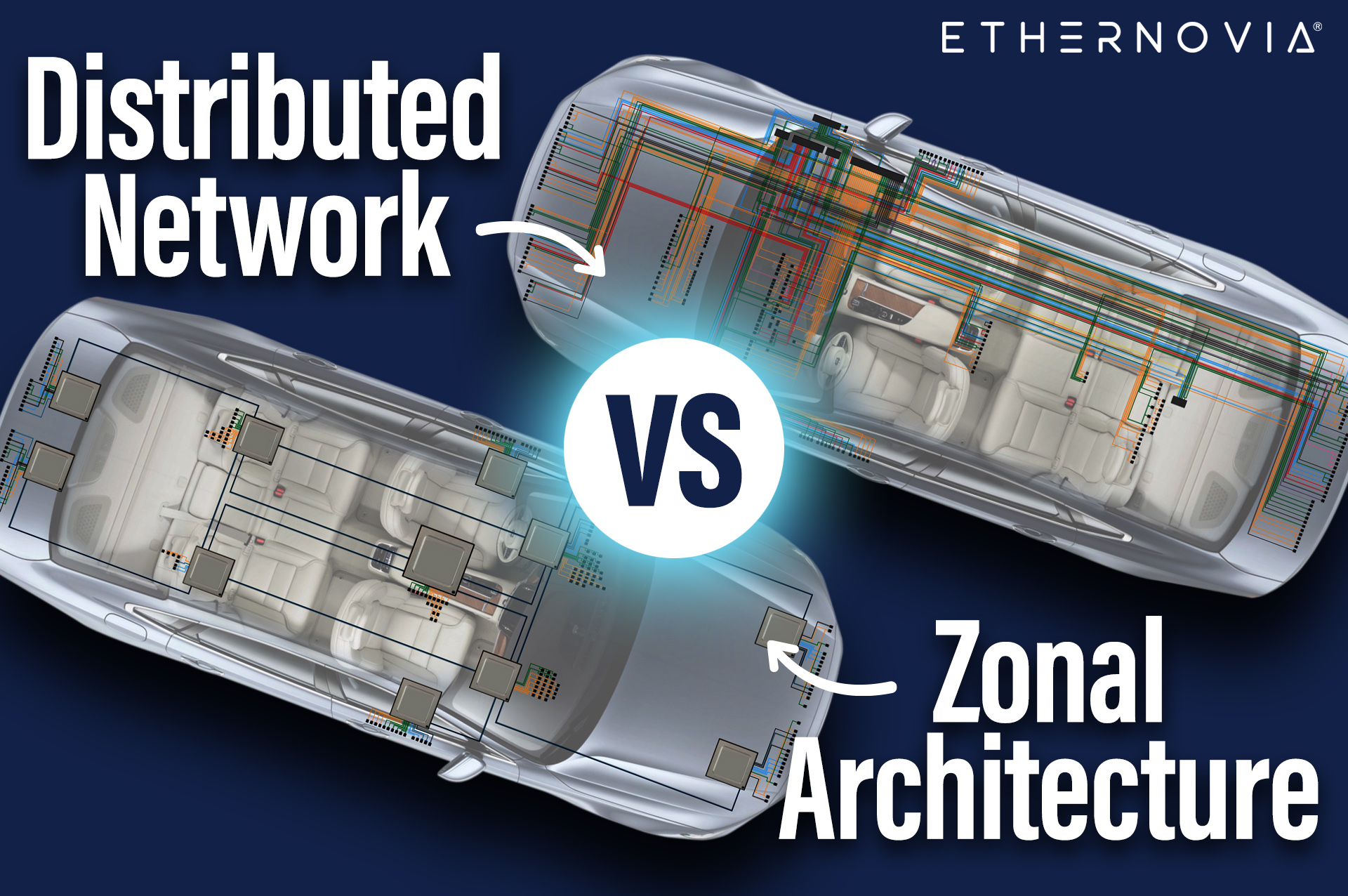Products
Solutions
Published
18 August 2025
Written by Harry Forster
Today’s cars are not just vehicles — they’re computers on wheels. With dozens of electronic control units (ECUs), ADAS cameras, infotainment systems, and a growing wave of software-defined features, the pressure on in-vehicle networks has reached breaking point. Legacy standards like CAN, LIN, and FlexRay were never designed to handle gigabit-scale data transfers. The result is a patchwork of wiring harnesses, protocols, and compatibility headaches.
This is where the Automotive Ethernet Transceiver comes in. Ethernovia, by consolidating these legacy networks into a single, unified Ethernet backbone, car makers can simplify wiring, reduce vehicle weight, and unlock the bandwidth needed for modern features like autonomous driving and real-time OTA updates.
Enter zonal architecture
Instead of each ECU connecting through its own bespoke wiring, a zonal architecture divides the car into logical regions. Each zone hosts a controller, and these controllers connect to one another through high-speed Ethernet. At the heart of this new approach lies the Automotive Ethernet Transceiver, which provides the physical layer for reliable, low-power, and scalable connectivity.
Ethanovia’s solution is purpose-built for automotive applications. Their 10G single-pair Ethernet device offers the performance of traditional multi-pair Ethernet, but with fewer cables and connectors. That means easier routing during manufacturing, less copper in each car, and lower overall costs.
Why single-pair Ethernet matters
Weight is a constant challenge for OEMs. Every kilogram saved improves efficiency, especially in electric vehicles. A single-pair Automotive Ethernet Transceiver can reduce harness bulk without compromising on bandwidth. Supporting both 1G and 10G operation, the same device can maintain backwards compatibility with existing systems while preparing vehicles for multi-gigabit data requirements.
For ADAS and sensor fusion, where multiple high-resolution cameras and LiDAR units need to feed data into central processors, this bandwidth is critical. Without Ethernet-level throughput, latency and reliability issues can compromise safety features.
Designed for the software-defined vehicle era
Automotive design is moving away from hardware-defined platforms. Future vehicles will be software-first, with features and updates delivered digitally. That shift demands a network that is flexible, scalable, and easy to maintain. The Automotive Ethernet Transceiver enables service-oriented architectures where zonal controllers can run distributed workloads and deliver services directly to where they’re needed.
Ethanovia’s devices, built on advanced TSMC 7nm process technology, are optimised for low power and high reliability. They offer multi-gigabit scalability and automotive-grade robustness, making them a cornerstone for OEMs rethinking the backbone of their next-generation platforms.
In short: fewer wires, lighter vehicles, faster networks, and future-ready architectures — all made possible by the Automotive Ethernet Transceiver.
Comments are closed.

Comments
No comments yet